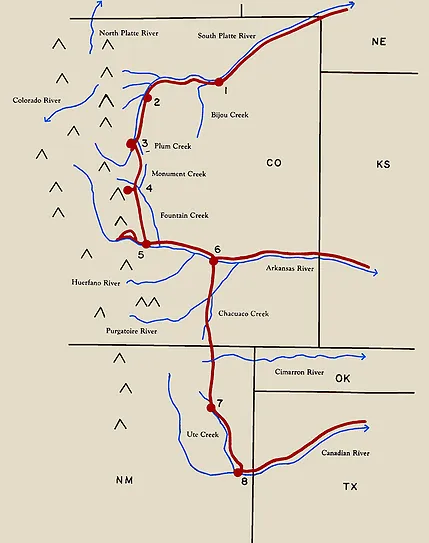The Edwin James Project
- emjames202
- Feb 26, 2023
- 2 min read

In 2017, I initiated the Edwin James Bicentennial Project to photograph Pikes Peak and the surrounding landscape with a pinhole camera. My ancestor, Edwin James, was a botanist and surgeon on the Major Stephen H. Long Expedition of 1820. Edwin was the first recorded ascent of Pikes Peak on July 14, 1820. I wanted to photograph the landscape as the Long Expedition might have experienced it 200 years ago: a vast, unspoiled, and timeless wilderness. I never intended to follow his footsteps, but to travel in similar terrain and experience the land. Goals: • Ongoing landscape photography with a pinhole camera • A three-day hike to the summit of Pikes Peak on July 14, 2020, to commemorate the bicentennial of Edwin James achievement on July 14, 1820. (Completed) • Publish a legacy book (Pending)

The image to the right is the only known likeness of Edwin James at approximately eighteen years old. The original was etched in ivory and its whereabouts is unknown. A graduate with honors from Middlebury College in Vermont, Edwin was a man of many talents – an esteemed botanist, physician/surgeon, geologist, explorer, author, and abolitionist. As an explorer, he was the first documented individual to summit Pikes Peak on July 14, 1820. He wrote the Official Account of the Major Long Expedition in 1823. The Account was later used by James Fenimore Cooper for his novel, The Prairie. Further, Edwin translated the New Testament into Ojibwe. As a botanist on the 1820 Long Expedition, Edwin collected 700 species of plants, 140 of which were new to science, including the Colorado state flower, the blue columbine. Late in life, his homestead served as a station on the Underground Railroad. He died on October 25, 1861.

A map from the Expedition Account Atlas, 1823. Edwin was embroiled in controversy by designating the area east of the Rocky Mountains as the “Great American Desert.” As a result, it is estimated that western migration was delayed by forty years. Major Long renamed Pikes Peak to James Peak, which is noted in the map. Later, after several decades of disagreement, the issue was settled and the mountain yet again reverted to Pikes Peak. A smaller mountain, James Peak, 13,294 feet elevation, was named after Edwin and is located within the James Peak Wilderness near Idaho Springs, Colorado.
Pikes Peak or Bust! Bicentennial Commemoration with family and friends of Edwin James reaching the summit of Pikes Peak: July 14, 1820 − July 14, 2020






Comments